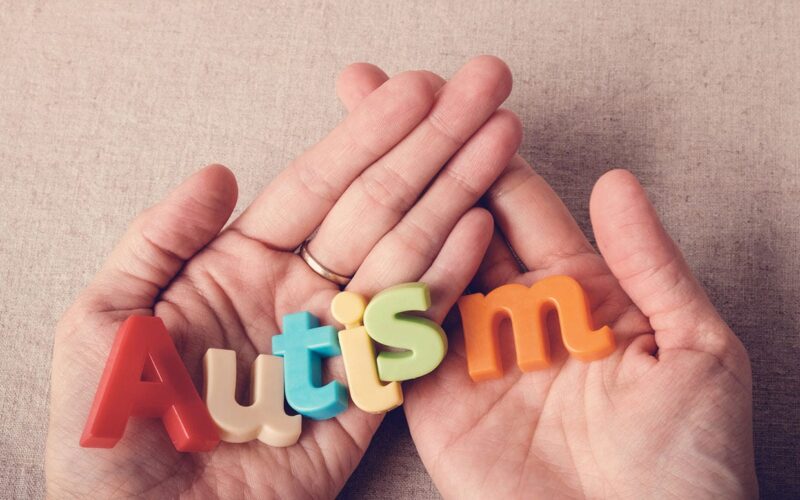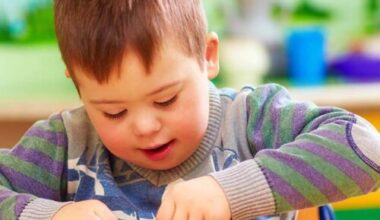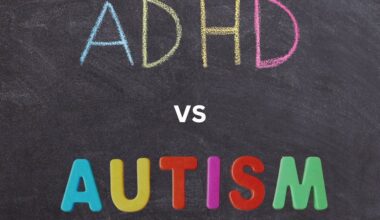What are the different types of autism?
If you’ve ever seen someone who struggles to relate, interact, and socialize with people in their immediate environment—perhaps you’ve even noticed on one or two occasions that they have trouble understanding nonverbal cues like body language or facial expressions—it could be possible that they have autism, a disorder that we’ll be discussing in this article along with its different manifestations or types.
Key Takeaways
- Autism is frequently characterized by difficulties with social communication and engagement, repetitive activities or narrow interests, sensitivity to sensory input, and difficulty interpreting nonverbal signals like body language or facial expressions.
- Scientists think a combination of genetic and environmental factors may contribute to the development of autism spectrum disorder (ASD) however, it is still uncertain as to what might be the major cause of autism.
- Asperger’s syndrome, autistic disorder, childhood disintegrative disorder, and pervasive developmental disorder not otherwise defined (PDD-NOS) were among the terms used by specialists to describe various types of autism until recently. But as of late, they’ve all been termed “autism spectrum disorders.”
What Is Autism?

Autism, or autism spectrum disorder (ASD), is a developmental disorder that affects how a person communicates, interacts with others, and experiences the world around them. It’s called a “spectrum” disorder because it can manifest in different symptoms and severities, varying from person to person. Autism is frequently characterized by difficulties with social communication and engagement, repetitive activities or narrow interests, sensitivity to sensory input, and difficulty interpreting nonverbal signals like body language or facial expressions. A person with autism has developmental problems that impact their ability to engage with others, communicate, and perceive their environment.
I used to know a friend who had this disorder from school days. He enjoyed his own company and would leave the environment if it started getting rowdy. I thought at first that it was just a case of being an introvert, but with time, I realized that even on his contact list, he had just 2 people, which were his mom and sister. I had to find a way to help him. He was a smart guy and very good at his academics and what he does but his inability to connect with every other person but himself was getting in the way of some good breaks for him.
No, he wasn’t unwell, regardless of what you may think, and he was unaware that he had this condition. This brings me to say that autism is a neurological difference that frequently produces unique strengths and abilities; it is not a sickness that has to be treated. Nonetheless, early assistance and intervention can significantly enhance the quality of life for autistic people.
What Causes Autism?

It is still uncertain as to what might be the major cause of autism. Scientists think a combination of genetic and environmental factors may contribute to the development of autism spectrum disorder (ASD). Through my personal research over the years, I have been able to notice some causes.
Genetics:
Many studies have shown that genetics plays a significant role in autism. It is believed that certain genes or combinations of genes may increase the risk of developing ASD. However, it’s important to note that no single gene has been identified as the sole cause of autism, and genetic factors alone do not explain all cases of autism.
Environmental Factors:
Environmental factors may also contribute to the development of autism. These can include factors such as prenatal exposure to certain substances (e.g., drugs, alcohol, or toxins), maternal health during pregnancy, and complications during childbirth. However, the specific environmental triggers for autism are still under investigation.
Neurological Differences:
Research has shown that individuals with autism often have differences in brain structure and function compared to neurotypical individuals. These differences can affect how the brain processes information, responds to stimuli, and regulates emotions and behavior.
Combination of Factors:
It’s important to understand that autism is likely caused by a complex interplay of genetic and environmental factors. For example, a genetic predisposition to autism combined with certain environmental exposures or prenatal conditions may increase the likelihood of ASD development.
No Link to Vaccines:
It’s essential to debunk the myth that vaccines cause autism. Numerous scientific studies have consistently shown that there is no credible evidence supporting a link between vaccines (such as the MMR vaccine) and the development of autism.
How Do I Know If I Am Autistic? Symptoms Of ASD

Remember from my story that he didn’t know he had autism? Well, anyone can be unaware that they have autism too; it’s not a disease or anything, granted, but you can go about your daily life without realizing you have it. The big question then becomes, how do I know if I have autism?
There are several signs and symptoms you can look out for. However, it’s important to note that only a qualified healthcare professional, a psychologist or psychiatrist specializing in autism, can provide a formal diagnosis. Here are some common signs of autism:
Social Challenges:
You could be dealing with autism if you have difficulty understanding social cues, such as facial expressions, tone of voice, or body language. Struggling with making or maintaining eye contact. Finding it challenging to engage in conversations or make friends.
Communication Differences:
Autistic people mostly have delayed or unusual language development. Difficulty with verbal communication, such as taking things too literally or having a limited range of topics in conversation. Repetitive or unusual speech patterns.
Repetitive Behaviors:
If you find yourself always engaging in repetitive movements, such as hand-flapping, rocking, or spinning objects, Having strict routines, and becoming upset if someone or something tries to disrupt your routines, then you might just be dealing with autism
Sensory Sensitivities:
Being sensitive to sensory stimuli, such as loud noises, bright lights, certain textures, or strong smells. Reacting strongly or becoming overwhelmed by sensory input are things you must watch out for if you suspect autism in some of the behaviors you play out.
Special Interests:
When you notice that you’re always developing intense interests in specific detailed and specialized topics or activities and focusing on them extensively, you should observe yourself for autism.
Difficulty with Changes:
you are likely living with autism if you Struggle with transitions or changes in routine. Also, becoming upset or anxious when faced with unexpected situations are significant sign to watch out for autism.
Types of Autism Spectrum Disorder (ASD)

I know you’re asking if autism disorder comes in different types.
Yes! There are indeed a number of disorders or classifications that fall under the autism spectrum that can help explain the variety of traits and difficulties that people may encounter.
Asperger’s syndrome, autistic disorder, and pervasive developmental disorder not otherwise defined (PDD-NOS) were among the terms used by specialists to describe various types of autism until recently. But as of late, they’ve all been termed “autism spectrum disorders.”
If you still hear people use some of the outdated terminology, you can find out what they mean:
Asperger’s Syndrome
The term Asperger’s syndrome is an old term used by professionals in the past and has been long reclassified as a level 1 autism spectrum disorder according to the DSM-5 diagnostic manual. Level 1 autism disorder falls into the less severe category of autism. Asperger’s syndrome people can be highly intelligent and capable of managing their daily affairs. They can extremely concentrate on subjects that pique their interest and talk about them endlessly. However, socially, they have such a hard time.
Pervasive Developmental Disorder-Not Otherwise Specified (PDD-NOS):
This term was used in the past to describe individuals who exhibited some but not all of the diagnostic criteria for autism or Asperger’s syndrome. With changes in diagnostic criteria, PDD-NOS is no longer used as a distinct diagnosis but is still sometimes referenced in historical contexts.
It is a mild type of autism that exhibits different symptoms. The most prevalent signs are difficulties in social and linguistic development. There could also be delays in your child’s walking, language development, and other motor abilities. But by watching the child and noticing which areas of their development are lacking, such as social interaction, you can determine if the child has this kind of autism.
Autistic Disorder (Classical Disorder)
In earlier diagnostic manuals, such as the DSM-IV, this term was used to characterize people who had more severe symptoms in multiple domains, such as behavior, social interaction, and communication. Following the switch to the DSM-5, “autistic disorder” was merged into ASD.
Childhood Disintegrative Disorder (CDD):
This is a rare condition within the autism spectrum, but the most severe. Children with this disorder often grow for a while (up to age 3 or 4), after which they significantly lose the language, social interaction, and motor skills they have previously learned.
Rett Syndrome:
Although not technically classified as part of the autism spectrum, Rett Syndrome is a neurological disorder that shares some similarities with autism. It primarily affects females and characterizes a loss of motor and communication skills, repetitive hand movements, and other neurological symptoms.
Can an Autistic Person Live a Normal Life?

Having worked with this group of people, I have realized that, even though this is not a typical disease, different people will respond differently as regards living a normal life. This is because people experience various types or levels of autism spectrum disorder (ASD). What do I mean? Since each person experiences ASD symptoms differently, therapy programs are tailored to the passions, interests, and skill sets of each individual. So yes, they can live a normal, independent life like any other person, depending on their response to the support they receive.
For instance, how I helped my friend during school days was that I started taking my friend to social events, which helped him develop his social circle and establish new relationships. I helped him interact with others more. He loved basketball so I encouraged him to join the school’s basketball team and he turned out the best in the team. Thankfully, he eventually came out of his shell and began interacting with more people. The bad news is that although he occasionally retreats into his shell, he has changed since we first met.
So, yeah, an autistic person can live a normal life.
Can an Autistic Person Have a Non Autistic Child?
Yes, an autistic person can have a child who is not autistic. Autism spectrum disorder (ASD) is influenced by a combination of genetic and environmental factors, and it does not follow a strict pattern of inheritance like some single-gene disorders. While there may be a slightly higher likelihood of autism in children of autistic parents compared to the general population, an autistic person can have a child who does not have autism. The factors influencing neurodevelopment are multifaceted and not solely determined by parental autism status.
Conclusion
If you identify with a few of these traits and they have a significant impact on your day-to-day functioning, it might be beneficial that you get evaluated by an expert in autism. They can evaluate and provide guidance according to your particular circumstances.
Related Articles
- Broken Wrist Syndrome in Autism: Symptoms, Causes, Prevention & Treatment
- High-Functioning Autism vs Asperger’s Syndrome: What Are the Differences?
- DOWN SYNDROME VS AUTISM: WHAT ARE THE DIFFERENCES?
- What Are Autism Facial Features: All You Need






